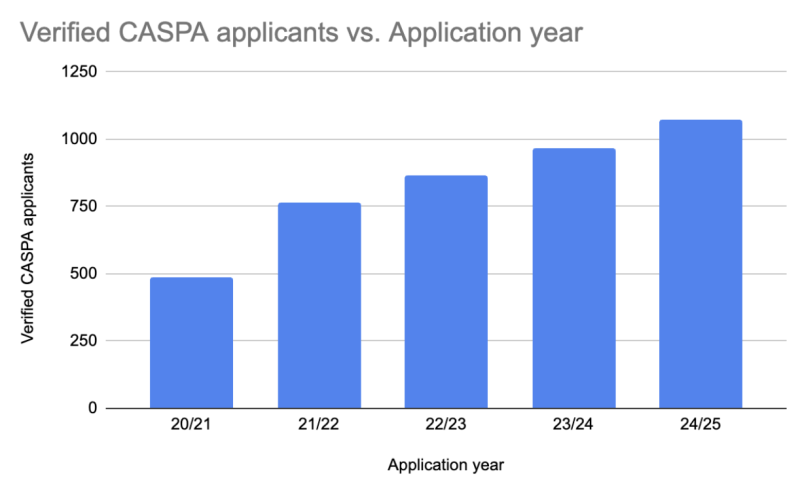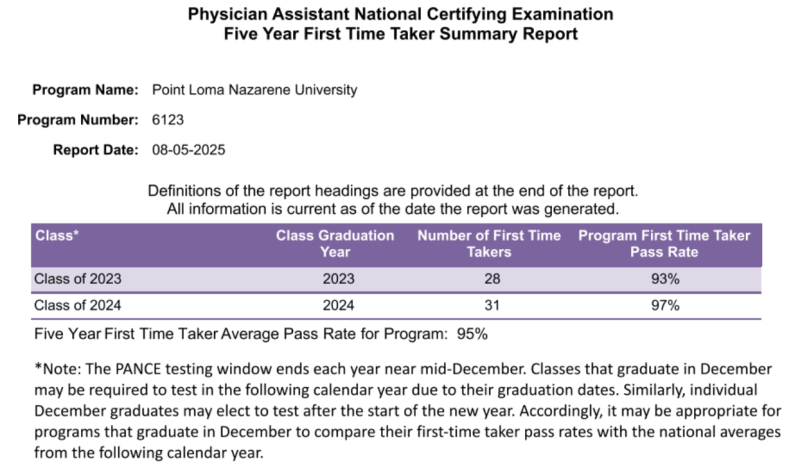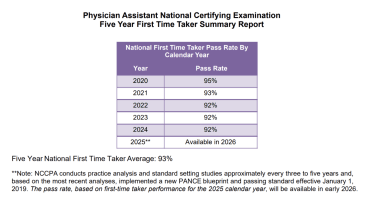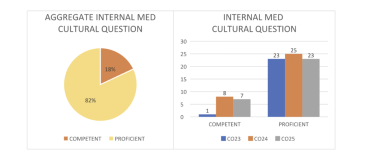About the Program
The Physician Assistant program at Point Loma Nazarene University is unique to the PA profession in several ways. As a faith-based university, our mission is to produce competent, professional clinicians who practice evidence-based medicine, demonstrate cultural sensitivity, and have the opportunity to manifest their faith through service to the community. The program blends service experiences into the curriculum throughout both the didactic and clinical phases, including a dedicated month each year allowing domestic, national, or international medical exposures through the extensive networks and local connections in Southern California.
Physician Assistant, M.S.M Program Goals
1. Recruit qualified individuals who successfully complete the Master of Science in Medicine degree at PLNU.
Rationale: The success of this program will be measured by the number of candidates completing the rigorous curriculum, and the PANCE pass rate indicating high-quality applicants. The benchmark for PLNU is recruiting students with a cohort average science and cumulative GPA above 3.5, a graduation rate ≥95%, a total cohort attrition ≤ 5%, and PANCE first-time pass rate ≥ the national average.
Class Averages
| Class of | Cum GPA | Sci GPA | Patient Care Experience Hours | Service Hours |
|---|---|---|---|---|
| 2023 | 3.73 | 3.75 | 3332 | 349 |
| 2024 | 3.77 | 3.78 | 3603 | 580 |
| 2025 | 3.82 | 3.83 | 2839 | 750 |
| 2026 | 3.82 | 3.81 | 5073 | 909 |
| 2027 | 3.79 | 3.8 | 4666 | 617 |
| Class of | 2023 | 2024 | 2025 | 2026 | 2027 |
|---|---|---|---|---|---|
| Maximum entering class size (as approved by ARC-PA) | 30 | 32 | 34 | 34 | 34 |
| Entering class size | 30 | 31 | 34 | 36 | 35 |
| Graduates | 28 | 31 | 31 | ||
| * Attrition rate | 3.5% | 0% | 3% | ||
| Number joining class cohort who began with different cohort | 0 | 1 | 0 | 2 | 1 |
| **Graduation rate | 93% | 100% | 97% |
*Attrition is defined as the permanent loss of a matriculated student from the course of study in a physician assistant program.
**Attrition and graduation rates will be reported after graduation of the class in December and updated annually.

2. Maintain an accredited program that meets or exceeds the ARC-PA Standards for Accreditation of a Physician Assistant program, ensuring that graduates have the requisite knowledge and skills for the practice of medicine as Physician Assistants.
Rationale: A quality education fosters innovation with teaching and learning opportunities tied to ongoing assessment to ensure graduates are prepared to enter into practice. Benchmarks for this goal include having 100% of students pass the summative evaluation and having a cohort first time PANCE pass rate ≥ the national average.
The ARC-PA granted Accreditation-Provisional status to the Point Loma Nazarene University Physician Assistant Program in 2021 and in March 2024 after the Provisional Monitoring visit.
Accreditation-Provisional is an accreditation status granted to new programs that have demonstrated the ability to meet ARC-PA Standards through their planned program design and resource allocation, and that continue to show progress toward full compliance as students are enrolled. Accreditation-Provisional does not ensure future accreditation but permits the program to matriculate students who are eligible to take the Physician Assistant National Certifying Examination (PANCE) upon successful completion of the program.
This status is limited to no more than five years from matriculation of the first class. The program will be reviewed again in March 2026.
3. Foster a commitment to service to medically underserved communities.
Rationale: Placing students in centers that provide care to underserved populations helps to ensure that our PA students understand and are prepared to address the multiple factors contributing to health care disparities. The benchmark for this goal is to have 100% of each cohort to have underserved experience.
As demonstrated below, the program meets this goal by placing all students in underserved and/or rural locations with the desire to foster a long-term commitment to this healthcare practice. This commitment is realized through voluntary activities over the course of the didactic phase, as well as placements in the Service month (August) and again in the Service elective clinical rotation.
| Class of | % with service in didactic phase% with underserved experience | % with underserved clinical rotations |
|---|---|---|
| 2023 | 100% | 100% |
| 2024 | 100% | 100% |
| 2025 | 100% | 100% |
| 2026 | 100% |
Students participate in an individual service project with a local organization and complete a group project. This project will identify and address a social health care gap in San Diego County and propose a solution. Students write a reflective paper at the conclusion of their service elective rotation. Group projects are presented at the end of the clinical year. Achievement of these goals will be updated annually.
"San Diego is a true melting pot where there are over 200 different languages spoken. It is home to many refugees, immigrants, and a variety of different cultures. My comfort levels changed for the better after my service experience with a local clinic."
Natalie Rudningen, Class of 2023
"The busiest weeks of school, where it feels impossible to look up from studying for more than 20 seconds, are the ones I am most thankful we have these service opportunities. I am grateful to PLNU for providing us with spaces where we can grow in our clinical skills during our didactic year; these spaces remind us of our overarching Purpose as servant leaders as we learn more about what it means to be a PA."
Sophia Timm, Class of 2026
4. Educate students in a collaborative team model that promotes critical thinking and medical problem-solving skills.
Rationale: Training health professions students together increases knowledge of and respect for other disciplines scope of practice, similarities in patient care and identifies potential areas of role overlap.The benchmark for this goal is to have 100% of each cohort participate in interprofessional edcuation (IPE) events.
This curriculum integrates formal didactic instruction on healthcare professions with structured interprofessional experiences, including role-playing and team-based learning. Students from PA, Athletic Training, Kinesiology, and Integrative Wellness programs complete an evidence-based medicine course and engage online, with medical providers educating them on their careers. Students will also participate in multiple IPE events with NP, Pharm, OT, AT, nursing, and mental health students, emphasizing teamwork, communication, and role clarity. 100% of students have participated in these events. Students also gain hands-on experience at health fairs and street medicine teams alongside medical professionals. Faculty model interprofessional collaboration, and clinical sites provide PA students opportunities to work with diverse healthcare teams.
5. Graduate students with PANCE pass rates at or above the national average.
Rationale: The military and federal health services as well as all 50 states require that PAs pass the Physician Assistant National Certifying Examination in order to be licensed and practice. The benchmark for this goal is to have a cohort first time PANCE pass rate ≥ the national average.



6. Students will demonstrate cultural sensitivity throughout didactic and clinical settings as evidenced by student performance.
Rationale: Culturally sensitive care is essential to building trust, improving communication, and meeting the needs of diverse patient populations. By assessing cultural sensitivity throughout didactic and clinical training, the program ensures students develop the professional behaviors and patient-centered skills required to provide equitable, respectful care in all practice settings. The benchmark for this goal is to have ≥70% of the cohort demonstrate competency on assessments conducted during patient encounters that include cultural sensitivity markers, and less than 10% of the cohort having a documented professional issue due to cultural insensitivity.
